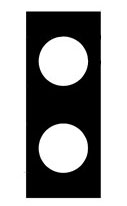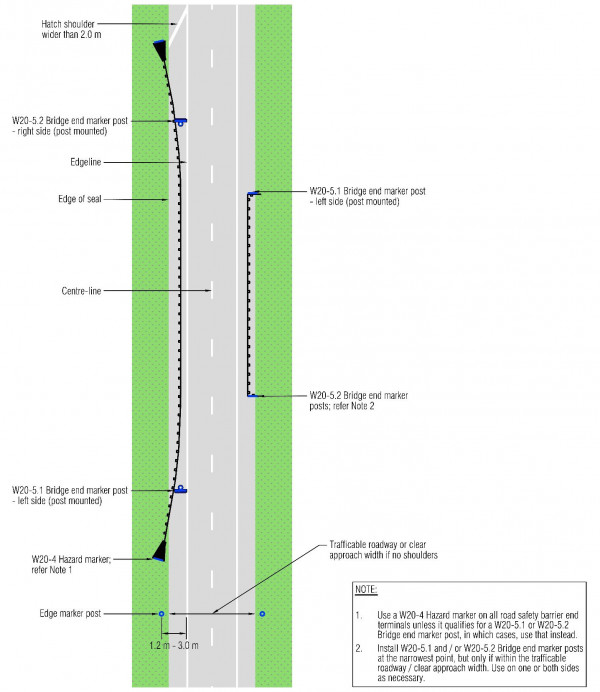Hazard markers (W20-4) should be used as described below and as shown in Figure 6‑11.
Specifications for Hazard markers, which can be sourced from the sign specifications are summarised in Table 6‑15.
Table 6‑15: Specification for hazard marker
|
Colour: |
Two 100mm diameter retroreflective white discs |
|---|---|
|
Background: |
Matte black |
|
Height: |
375mm |
|
Width: |
150mm |

Figure 6-11 note:
Refer to Figure 6‑12 for information on hazard marker location.
Hazard markers should be used to mark hidden objects (eg depressed culverts), and upright items if there is a reasonable probability of them being a hazard (eg isolated unexpected object on a curve.)
Hazard markers should only be required if the object is within 4-6m of the relevant lane, the intervening area is traversable (which means that the ground surface shape is such as to permit the driver of an errant vehicle to regain control, ie the ground has a relatively smooth surface and a slope of ≤ 1:6) by vehicles, and the hazard is not already shielded by something else (eg road safety barrier, kerb, longitudinal drain). Hazard markers are not required for frangible type service poles.
They are not normally required in urban areas.
Refer to Figure 6‑12 for installation diagrams.
The surface of a hazard does not normally need painting white unless its size, shape or position makes it particularly hazardous. A Hazard marker should be attached directly to the obstacle or installed on a frangible post immediately in front of it. The marker should be positioned so that its lower edge is 1.2m above ground level unless another approved installation (such as direct attachment to a barrier end) is used. Hazards on both sides of the highway should be marked as appropriate.
The installation of bridge end marker posts should be in accordance with the guidance in Section 7 of TCD Manual Part 1 including that they should be frangible when installed in clear zones.
Figure 6‑12: Hazard markers installation of signs and markings

View larger image [JPG, 256 KB]